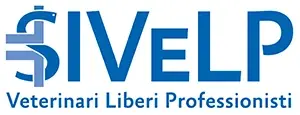
Food without fear: new food labelling rules will improve consumer information on food ingredients, in particular allergens An important amendment to the EU food labelling Directive has been adopted by the Council and European Parliament. The amendment will ensure that consumers are informed of the complete contents of foodstuffs subject only to a very limited number of …
Food without fear: new food labelling rules will improve consumer information on food ingredients, in particular allergens An important amendment to the EU food labelling Directive has been adopted by the Council and European Parliament. The amendment will ensure that consumers are informed of the complete contents of foodstuffs subject only to a very limited number of derogations. These derogations will not apply to certain ingredients liable to cause allergies or intolerance which are listed in the Directive, thus enabling consumers with allergies to identify any allergenic ingredients that may be present in a food. The new rules abolish the “25% rule” which currently means that it is not obligatory to label components of compound ingredients that make up less than 25% of the final food product. The new rules will also extend to alcoholic beverages if they contain an ingredient on the allergen list – for example sulphite in wines. Under the new rules, it will be mandatory to list all sub-ingredients of compound ingredients, which means that allergens cannot be “hidden”. One example of this is sauces that might contain allergenic ingredients like eggs, milk or mustard. Previously such sub-ingredients did not have to be listed if they were part of a compound ingredient that made up less than 25% of the product, whereas now all such allergenic ingredients will have to be declared. In addition, some labelling exceptions will no longer be accepted for allergens. Previously it was possible to declare ingredients only as a category (e.g. “vegetable oil”), whereas the new rules will require the source to be indicated for all allergenic ingredients so that for example “peanut oil” must be specified. Similarly, the source of a natural flavour such as a nut will have to be indicated, while it is currently labelled only as “natural flavour”. Alcoholic beverages were previously exempt from ingredient labelling. The new rules will require all ingredients that are on the list of allergens to be declared – so that for example sulphite present in wines will have to be indicated. Sulphites are additives used as preservatives in many foodstuffs, including wines, beer and cider. Many people suffer from intolerance to sulphites with symptoms such as asthma attacks, which may have serious consequences. Background In the White Paper on Food Safety, the Commission announced its intention to propose an amendment to the Labelling Directive 2000/13/EC, especially the “25% rule”, which means that components of compound ingredients which form less than 25% of the final product need not be indicated on the label. This 25% rule was introduced into Community legislation more than 20 years ago in order to avoid inordinately long lists of ingredients. It is based on the principle that the consumer knows the composition of compound ingredients and can therefore deduce, for example, that jam added to biscuits is prepared with fruit and sugar. This percentage will be abolished with the new proposal. However, since then, food production has become more and more complex, and people eat a lot more processed foods. Over the past few years, consumers have repeatedly expressed the wish to be better informed about the foodstuffs they purchase, and specifically about their composition, even if full ingredient labelling will inevitably make ingredient lists longer. The many recent food scares have reinforced this need for information. Information is particularly important for consumers who suffer from allergies or adverse reactions to certain substances. The proportion of the population with food allergies or food intolerance is increasing all the time (according to the allergy associations 8 % of children and 3 % of adults are affected) and new allergens are emerging. These allergies not only cause illnesses, often of a chronic nature (e.g. atopic dermatitis, urticaria, digestive symptoms), but can also provoke life-threatening reactions (asthma, anaphylactic shock). For these people the lack of detailed information is a handicap, in that they are never sure that the product they are buying does not contain the allergen that can provoke an adverse reaction. Allergic consumers therefore need to have complete and precise labelling and the new proposal provides for that. The new requirements contain provisions to avoid absurdities or over-regulation, to prevent the risk of labelling becoming too complex, and to take account of the technical constraints associated with the manufacture of foodstuffs. The additional labelling requirements will enter into force after a transitional period to allow companies to bring product labelling into line with the new provisions. The Directive will be published in the EU’s Official Journal in late 2003. Member States then have one year to transpose the Directive, after which a one-year transition period is granted to manufacturers in order to modify the labelling of their products. If these steps move smoothly, consumers will see the concrete results of this Directive on their shelves in 2005. List of potential allergenic ingredients to be labelled: – Cereals containing gluten and products thereof – Crustaceans and products thereof – Eggs and products thereof – Fish and products thereof – Peanuts and products thereof – Soybeans and products thereof – Milk and dairy products (including lactose) – Nuts and nut products – Celery and products thereof – Mustard and products thereof – Sesame seeds and products thereof – Sulphur dioxide and sulphites at concentrations of more than 10 mg/kg or 10 mg/litre
Nessun tag disponibile per questo articolo.
